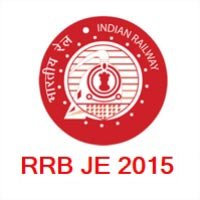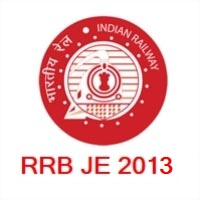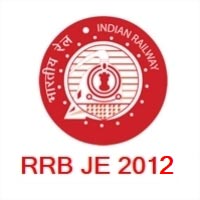Ques.31. Which of these memories will be used to store variable data?
- RAM
- ROM
- EPROM
- PROM
Answer.1. RAM Explanation:- Classification of Memory There are two types of semiconductor memories, namely ROM and RAM. The ROM stands for read-only memory and data are permanently stored in memory cells. We can able to read data from the memory. ROM cannot be reprogrammed. This memory is nonvolatile and has data retention when power is switched off. But the data contents of ROM are accessed randomly just like the volatile memory circuits. Vinyl records and compact audio disks are typically referred to as read-only memory or ROM in digital systems. The RAM stands for random access memory, which means that any storage memory location can be accessed to read or write operations. RAM is volatile memory, so data will be lost if power is switched off. In this section, the classification of ROM and RAM are explained. RAM consists of integrated circuits and may vary in capacity from a few hundred bytes (one byte is eight bits, or binary digits, of information) to many megabytes (a megabyte is one million bytes). RAM can store variable data or to programs that may be run on the computer. Access time (the time required to retries the data for processing by the CPU) to data in RAM is very short. Many modern computers have volatile RAM, that is, information stored in the is lost when the computer is turned off. Some have a battery backup to avoid logic data. Many computers also have a memory section reserved for storing germane] data and programs. This memory is called read-only memory, or ROM. This memo] may not be altered during normal operations nor is it normally volatile.
Ques.32. Processing time is list in a ________ computer
- 16 Bit
- 32 Bit
- 8 Bit
- 64 Bit
Answer.4. 64 Bit Explanation:- The processor architecture of the central processing unit (CPU) affects the performance of the computer. A CPU contains a register, which is a storage location where logical functions are performed on the data. A larger register can point to more addresses than a smaller register. The terms 32-bit and 64-bit refer to the amount of data a computer’s CPU can manage. A 32-bit register can store 232 different binary values. Therefore, a 32-bit processor can directly address 4,294,967,295 bytes. A 64-bit register can store 264 different binary values. Therefore, a 64-bit can directly address 9,223,372,036,854,775,807 bytes.T The amount of memory that a microprocessor can access depends on the size of the CPU registers. This means we can store 232 unique addresses in the CPU registers at different times, as a result, we can access 4 GB of RAM locations using 32-bit registers. And 64 bit can access more than 4 GB of RAM location.
Ques.33. In digital computer programming subroutines are used:-
- To reduce program executing time at the expense of more memory
- To reduce storage requirements
- To increase programming ease and reduce storage requirements
- Because most of the functions are the same
Answer.3. To increase programming ease and reduce storage requirements Explanation:- Main programs are like an organization where the chief plans all the activities and writes the final report, but he or she gets the work of different sectors done by different subordinates specialized in pertinent activities and who is responsible for their part of the work. The chief is like the main program and his or her subordinates can be compared with the subprograms. If the chief of a large and multifunctional organization tries to do everything by him- or herself, it is going to be a monumental task and it will be impossible to attain the desired efficiency that otherwise could be achieved with proper planning and division of work. Branch and interrupt structures have been called subroutines It is exactly what the subprograms are designed for. The purpose of subprograms is to simplify programming and at the same time increase the efficiency of the combined program with respect to Subprograms are divided into two categories—(i) FUNCTION and (ii) SUBROUTINE.
Ques.34. A microprocessor with a clock frequency of 100 MHz will have a clock period of
- 1 ns
- 10 ns
- 100 ns
- 1000 ns
Answer.2. 10 ns Explanation:- Given f = 100 MHz = 100 × 106 Hz Time = 1/frequency = 1/100 × 106 T = 100 × 10−6 = 10 × 10−9 = 10 ns
Ques.35. Hard copy means
- Output on tape
- The output on Hard disk
- Output on printer
- Details of hardware
Answer.3. Output on printer Explanation:- A hardcopy is a printed version on paper of data i.e stored in a computer.
Ques.36. The EPROM stands for:
- Erasable Programmable Read-only Memory
- Extended Parasitic Read-only Memory
- Extended Polar Read Only Memory
- None of these
Answer.1. Erasable Programmable Read-only Memory Explanation:- Erasable Programmable Read-only Memory (EPROM): EPROM is similar to PROM, except the ROM can be erased by shining a special ultra-violet light into a sensor on the ROM chip for a certain amount of time. This process will erase data on the ROM chip, allowing the chip to be rewritten.
Ques.37. The equipment attached to the CPU which computer can access are called
- Control Unit
- Computer components
- Hardware
- Peripheral
Answer.4. Peripheral Explanation:- A component is a part. The computer has several types of parts or components. Hardware is the mechanical devices and physical components of a computer system such as the CPU, hard drive, other internal disk drives, and memory (internal hardware). Hardware can also be outside of the computer; this type of hardware is called a “peripheral.” Peripherals are electronic devices that can be attached to the computer, other than the standard input-output devices such as the monitor, keyboard, and mouse. These external components include speakers, microphones, printers, digital cameras, and modems. These devices often require special software packages called drivers. Hardware is the basic computer equipment, and software (computer program) is the “intelligence” of a computer. The software program installed tells the computer what to do or how to interact with the user and how to process the user’s data. A computer without software is like a CD player without a CD. Without software, the user can only turn the computer on and off.
Ques.38. A semiconductor Read-only Memory basically is
- A set of flip flop memory elements
- A combinational logic circuit
- A sequential circuit with flip-flops and gates
- None of these
Answer.2. A combinational logic circuit Explanation:- The main or primary memory elements are semiconductor devices because the semiconductor devices alone can work at high speeds and consume less power. Moreover, they can be fabricated as ICs and also occupy less space. A typical semiconductor memory IC will have n address pins (lines) and m data pins (lines). The capacity of the memory will be 2n x m bits. Semiconductor memories can also be classified into read-only and read/write memories. In read-only memories, information is stored permanently either during manufacturing or after manufacturing and then interfaced to the microcomputer system. But in read/write memory, the processor can store (write) information as well as read from it. The ROM, PROM, and EPROM are read-only memories. The NVRAM, static RAM and DRAM are read/write memories. ROM ROM is a semiconductor memory that permits only read access. The ROM functions as a memory array whose contents, once programmed, are permanently fixed and cannot be altered by the microprocessor to which the memory is interfaced. Other names for this type of memory are dead memory, fixed memory, permanent memory, and Read-Only Store (ROS). In ROM, the memory cell (storage unit) will have a MOS transistor either with an open gate or a closed gate. Transistors with closed gates represent l’s and the ones with open gate represent 0’s. Since the configuration is fixed, they permanently store 1’s and 0’s. Combinational logic is a digital circuit whose output depends only on the current inputs or whose output is a function of its input only. For ROM the memory is always combinational since there is no need to preserve previous inputs and only current location is necessary.
Ques.39. The time constant of the RL circuit is:-
- LR
- L/R
- L2R
- LR2
Answer.2. L/R Explanation:- The time constant represents the time required for the charge to increase from zero to 63.2% of its maximum equilibrium value. An LR Series Circuit consists basically of an inductor of inductance L connected in series with a resistor of resistance R. Time Constant The time constant of an RL circuit is defined as the time taken by the inductor current to reach steady-state if the initial rate of rise is maintained. or The time constant of the RL circuit is defined as the amount of time necessary for the current in the circuit to reach 63.2% of its maximum value. or The time constant of a series RL circuit is equal to the ratio of the value of inductor to the value of resistance τ = L/R Where T = time constant in seconds,
L = inductor in Henry,
R = resistance in ohms.
Ques.40. The organic acid present in the vinegar is
- Methanoic acid
- Ethanoic acid
- Propanoic acid
- None of these
Answer.2. Ethanoic acid Explanation:- The acid that identifies the vinegar is Ethanoic acid, the amount of which can vary depending on the carbohydrate substrate used; Ethanoic acid is the only organic acid present in vinegar derived from pure alcohol. The common name of Ethanoic acid is Acetic acid.



